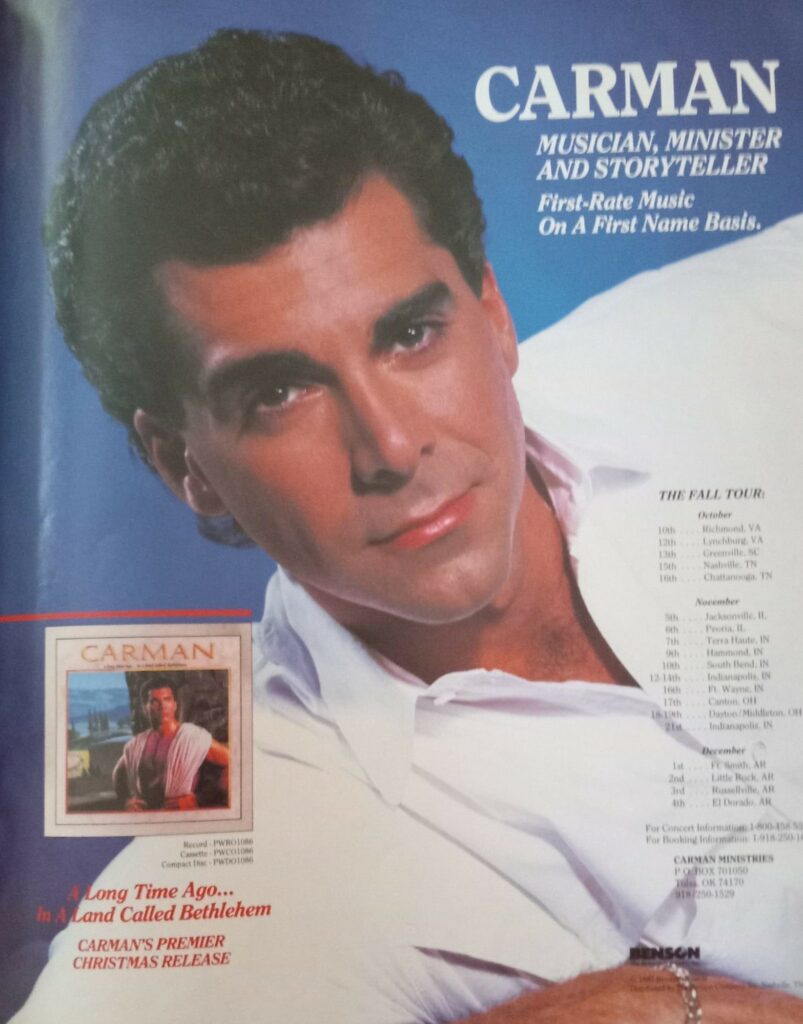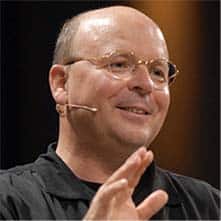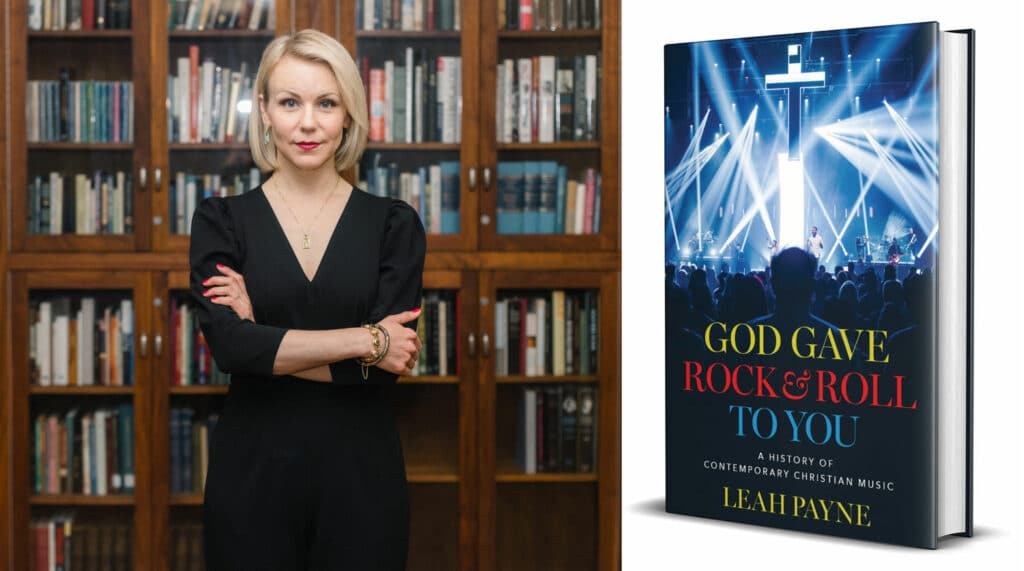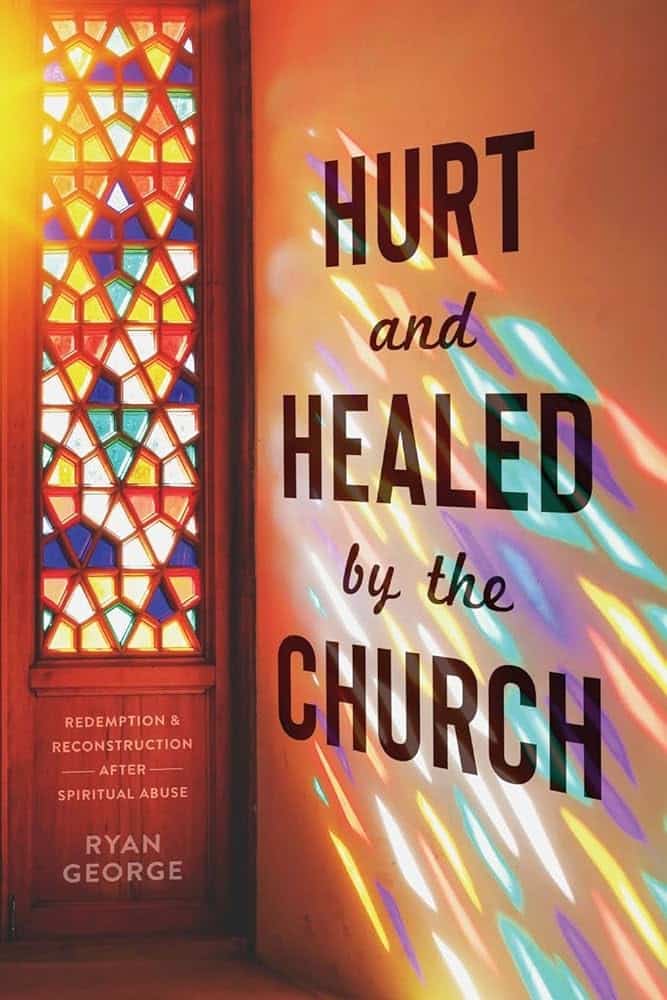God gave rock ‘n’ roll to everyone, as the British rock band Argent once sang.
And everyone includes the religious-right powerhouse James Dobson, as well as the legendary rock band Kiss, both of whom tried to reach the souls of teenagers through the power of rock ‘n’ roll.
Both Kiss and Dobson get a mention in “God Gave Rock & Roll to You,” a new history of the cultural power of contemporary Christian music from religious historian Leah Payne. The book traces the rise of CCM, which Payne describes as “part business, part devotional activity, part religious instruction,” from its humble beginnings to its 1990s heyday — when Amy Grant’s “Baby Baby” was a monster hit — and then to the current dominance of a handful of megachurches.
She also looks at how Christian leaders like Dobson, Billy Graham and concerned evangelical moms known as “Beckys” sought to harness the power of rock music to keep their kids Christian and to shape the broader culture.
“The story of CCM is the story of how white evangelicals looked to the marketplace for signs of God’s work in the world,” she writes.
Your tax-deductible gift helps our journalists report the truth and hold Christian leaders and organizations accountable. Give a gift of $30 or more to The Roys Report this month, and you will receive a copy of “Hurt and Healed by the Church” by Ryan George. To donate, haga clic aquí.

Payne draws on interviews with artists, fans and record executives as well as her own training as a religious historian to trace the rise and fall of CCM. The book is filled with sharp insights and small details about the role that Pentecostalism and Nazarene holiness codes played in shaping Christian music for decades. Rather than being built on generic evangelical beliefs, she argues, Christian music was influenced by both the ecstasy and the strict boundaries of those traditions.
Early on, Payne details how Pentecostalism inspired “Great Balls of Fire,” an early rock ‘n’ roll hit by Jerry Lee Lewis, cousin to televangelist Jimmy Swaggart. That term was used by Southern Pentecostals to talk about the Holy Spirit — a reference to the Book of Acts, where the spirit descends on early Christians in the form of fire.
For Pentecostals, being filled with the spirit often comes with a sense of euphoria, often displayed through singing. Rockers like Lewis took advantage of that connection, said Payne.
“You can imagine how scandalizing it would be for Pentecostals when Jerry Lee Lewis uses that expression as a very thinly veiled reference to sex,” said Payne in a recent interview. “They felt that it was desecrating their holy practices.”

Payne said the purity codes of groups like the Nazarenes also played a role in Christian music, which was seen as a more wholesome version of rock music. Leaders like James Dobson, who grew up in the Church of the Nazarene — a holiness tradition — used music to spread ideas about chastity and modesty for women.
“Women who were holiness preachers were super modest, but that made them spiritual bosses,” said Payne. “They were out there exorcising demons and telling men what to do from the pulpit.”
Folks like Dobson, Payne argues, kept the modesty part of holiness codes, but they domesticated it — spreading the idea that women should be submissive at home rather than powerful.
But women also played a major role in shaping Christian music. The genre’s biggest stars were women — like Grant — and women were its biggest customers. Especially a woman known as “Becky” — an industry term for the suburban evangelical moms who bought the majority of Christian music.
The name “Becky,” said Payne, was used by marketing executives and record producers to determine what songs got recorded and often determined which artists became stars. Payne points to the example of Carmelo Domenic Licciardello — better known as Carman—who se convirtió a star in the 1990s. She said record company executives were not big fans of Carman, whom she described as a Christian version of Liberace.

But the Beckys loved him and made him a star, said Payne.
“Beckys were really powerful,” said Payne. “They were the ultimate gatekeepers. There was great respect — and, in many cases, fear — of Becky because these suburban, conservative white women were very powerful if they were upset.”
Those women — as well as religious leaders like Dobson and Billy Graham — were hoping to use the power of mass media to shape the spiritual lives of their kids, said Payne. At the time, Payne said in the interview, Christian parents were being told their children were in serious danger of being corrupted by the outside world.
Buying the right kind of music could help keep them safe. That kind of concern sometimes crossed political lines as Christian rock began its rise. In the 1980s, Tipper Gore, wife of then-Democratic Senator Al Gore, led a campaign to get warning labels placed on music with offensive lyrics. That same kind of concern from moms helped drive the success of CCM.
But as Beckys became older and fewer in number — and the country became more diverse and more polarized — their buying power shrank. The dependence on that audience made it harder for Christian music to reach a changing nation.
“A lot of the collapse of the industry is explained by the fact that they doubled down on this person who did not replace themselves, demographically speaking,” Payne said.
The fracturing of the music business in general also hurt Christian music. Much of the genre’s success, said Payne, depended on creating a Christian alternative to mainstream pop stars like Madonna or George Michael.

As the larger music scene splintered and top 40 music no longer was a “coherent category,” that became harder to do. How do you create an alternative to the mainstream when there is no musical mainstream?
Payne said Christian music had an impossible task in trying to harness music and “coolness” for religious purposes. Coolness, she said, depends on authenticity and a sense of rebellion against social norms — both of which were problems for religious leaders.
“Christian rock was an uneasy effort to solve those problems,” she said. “And it didn’t work long term.”
The decline of churchgoing in America — and the consolidation of many Christians into megachurches — also hurt the Christian music industry. Many Christian bands got their start by playing concerts in medium-sized churches, said Payne, which have largely disappeared. And megachurches have their own bands and sometimes even music labels — they don’t need the music industry in the same way anymore.
“CCM depended on those groups to provide gatherings and revenue — and they just don’t exist anymore,” she said.
The CCM market was also affected by larger changes in the American religious landscape—such as the rise of charismatic megachurches like Hillsong and Bethel, whose songs dominate the worship music sung in churches. Other groups, like Southern Baptists or Christian music companies, tried to use music in service of their mission, said Payne. But those charismatic churches have made music their mission, said Payne, and no longer need the institutions that supported CCM.
“Among evangelicals, the group that had the most institutional heft was the Southern Baptist Convention,” she said. “And they have faded. CCM has faded. And what has arisen are the nondenominational charismatics. The music showed us that that was coming.”
 Bob Smietana es reportero nacional de Religion News Service.
Bob Smietana es reportero nacional de Religion News Service.




















Una respuesta
Thanks for alerting us to this important book. Thoroughly enjoyed it when it arrived in February. As a Christian retailer for 48 years in Canada I could relate entirely and now have pondered how the fast growth of ccm actually helped stores like ours stay open and be an impact in our cities. As Spotify and iTunes as well as Amazon came along many Christian retailers have gone. However there is a very small and strong remnant remaining and needless to say not selling much music.